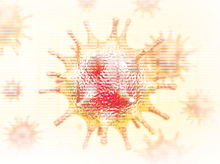
Challenge of Myocardial Injury in COVID-19
The Coronavirus disease 2019 (COVID-19), caused by severe acute respiratory syndrome coronavirus 2 (SARS-CoV-2), is now a global pandemic inflicting significant morbidity and mortality as well as substantial strain to the global healthcare system and economy. The COVID-19 was originally believed to be a predominantly respiratory disease. However, emerging evidence has identified that cardiovascular manifestations frequently play a central role in disease progression and patient outcomes1. Notably, recent investigations on pathophysiological mechanism of cardiac complications in COVID-19 and identification of risk factors for myocardial injury and death provide insights on the management of COVID-19 with myocardial injury.
Cardiovascular Involvement of COVID-19
The clinical characteristics of patients with COVID-19 have been extensively reported. However, there are emerging data on possible cardiovascular (CV) involvement and myocardial damage with COVID-19. For instance, results from 2 retrospective cohort studies involved respectively 2,736 (in the United States) and 101 (in China) patients with COVID-19 demonstrated that acute myocardial injury, as reflected by elevated plasma troponin I (TNI) level, was observed in 36% and 15.8% of COVID-19 patients, respectively. Moreover, patients with pre-existing CV diseases were more likely for admission to intensive care unit and treatment with mechanical ventilation2.
As indicated in a meta-analysis included 10 studies assessing the impact of underlying CV comorbidities and acute cardiac injury on in-hospital mortality risk in patients with COVID-19, the presence of pre-existing CV comorbidities was associated with higher odds of in-hospital mortality (unadjusted odds ratio [OR]: 4.85, 95% confidence interval [CI]: 3.07-7.70, Figure 1). In particular, acute cardiac injury may act as a mark of mortality risk, with an unadjusted OR of 21.15 (95% CI: 10.19-43.94)3.

Figure 1. Association between pre-existing CV disease and in-hospital mortality in patients with COVID-193
As reported, CV diseases are associated with an increased risk for developing severe complications of COVID-19. Of note, clinical opinions suggested that CV diseases may also be triggered and exacerbated by COVID-19. For instance, the increased myocardial oxygen demand in conjunction with hypoxemia with reduced myocardial oxygen supply observed in COVID-19 may increase the risk of myocardial ischaemia. Besides, the cytokine storm triggered by the infection may lead to myocardial depression and myocarditis. These events further increase the risk for myocardial necrosis and heart failure. Moreover, the occurrence of myocardial ischaemia, myocarditis, increased sympathetic tone, inflammation and electrolyte imbalance would increase the risk of both atrial and ventricular arrhythmias1.
Potential Mechanism of Myocardial Injury by SARS-CoV-2 Infection
The mechanism of SARS-CoV-2 infection to the host cells has been described in previous reports. Briefly, the binding of SARS-CoV-2 is mediated by the C-terminal domain of S1 subunit (S1-CTD) of the spike protein (S protein) on the virus, whereas the S1-CTD binds to the angiotensin-converting enzyme-2 (ACE2) receptor. A pre-requisite for the binding of SARS-CoV-2 to ACE2 is cleavage of the S protein by the transmembrane serine protease (TMPRSS2, Figure 2)4. Thus, infection with SARS-CoV-2 requires co-expression of ACE2 and TMPRSS2 in the same cell type, as proteolytic cleavage of viral S protein is essential for binding of the virus to ACE2.

Figure 2. Infection of SARS-CoV-24
Importantly, in addition to type II alveolar epithelial cells, ACE2 is highly expressed in pericytes. High expression of ACE2 in pericytes could lead to development of microvascular dysfunction. This explains the greater propensity for acute coronary syndromes (ACS). Further, ACE2 expression is up-regulated in failing human hearts, suggesting a plausible explanation for a higher infectivity of SARS-CoV-2 and a higher mortality in patients with heart failure4.
CV Risk Factors for Adverse Outcomes of COVID-19
Shi et al (2020) reported that patients with cardiac injury, as defined by TNI level above the 99th-percentile upper reference limit, presented mortality greater than those without cardiac injury (51.2% vs. 4.5%, p < 0.001, Figure 3)5. Hence, elevated TNI level is reported as an independent risk factor for mortality. In addition, a number of comorbidities are associated with worse clinical outcomes in patients with COVID-19. Particularly, severe COVID-19 is associated with rapidly progressing systemic inflammation, a pro-inflammatory cytokine storm and sepsis, leading to multi-organ failure and death.

Figure 3. Mortality of hospitalised patients with COVID-195
In a meta-analysis by Li et al (2020) including 4,189 confirmed COVID-19 patients from 28 studies, increased levels of creatine kinase-MB (CK-MB), myoglobin and N-terminal pro-B-type natriuretic peptide (NT-proBNP) were significantly associated with severe COVID-19 infection (p<0.001, Figure 4). Also, acute cardiac injury was more frequent in those with severe disease compared to milder cases (risk ratio: 5.99, 95% CI: 3.04-11.8, p<0.001)6. Hence, the severity of COVID-19 is associated with occurrence of acute cardiac injury. It is well noted that cardiac injury biomarkers mainly increase in non-survivors. Thus, effective monitoring of cardiac biomarkers is crucial in preventing myocardial complications in patients with COVID-19.

Figure 4. Changes in NT-proBNP level in COVID-19 non-survivors6
Management of Myocardial Injury with SARS-CoV-2 Infection
As cardiac damage is highly prevalent among patients with COVID-19, heart failure therapies are recommended where appropriate. Previous opinions advocated broad-spectrum antibiotics and/or antifungal treatments and treatment of arrhythmias, if necessary. Moreover, based on the growing evidence of disseminated intravascular coagulation (DIC) as a cause of organ injury, anticoagulation should be considered4.
Since cytokine storm appears to be a key pathogenetic process in patients exhibiting rapid deterioration, immune suppression and immune modulation approaches, such as treatment with glucocorticoids, have been tried; whereas glucocorticoids are recommended by Chinese guidelines. Notably, patients with evidence of lung fibrosis or severe cardiac involvement in the intensive care unit (ICU) may benefit from this approach7. Frontline physicians have to be aware that medications currently under evaluation for COVID-19 may have significant drug-drug interactions (DDI) and CV-related side effects, both acute and chronic8.
Currently, no evidence-based recommendation on long-term management of COVID-19 with cardiac involvement is available. However, patients with cardiac involvement initially should be monitored regularly. 12-lead electrocardiography (ECG) and 2D/Doppler echocardiography or, preferably, cardiac magnetic resonance imaging (MRI) with late gadolinium enhancement were recommended in previous reports. Further, patients should be given standard advice regarding physical activity. In order to monitor for potential long-term consequences of COVID-19, regular CV risk assessment should be considered in all patients who survive COVID-194.
Meanwhile, managing COVID-19 is challenging as there are no specific treatments for the disease. Research and clinical efforts focus in parallel on the development of new drugs against coronavirus as well as repurposing already approved drugs for treating COVID-19 infections. Before effective therapeutics for COVID-19 is available, public health interventions rely mainly on social measures preventing viral spread remains the mainstay of COVID-19 management.
References
1. Uriel N, Sayer G, Clerkin KJ. J Am Coll Cardiol 2020; 76: 547-9. 2. Lim GB. Nat Rev Cardiol 2020; 17: 454. 3. Li X, Guan B, Su T, et al. Heart 2020; 106: 1142-7. 4. Guzik TJ, Mohiddin SA, Dimarco A, et al. Cardiovasc Res 2020; published online Aug 1. 5. Shi S, Qin M, Shen B, et al. JAMA Cardiol 2020; 5: 802. 6. Li JW, Han TW, Woodward M, et al. Prog Cardiovasc Dis 2020. 7. Liu J, Cao R, Xu M, et al. Cell Discov 2020; 6: 16. 8. Dixon DL, Van Tassell BW, Vecchié A, et al. J Cardiovasc Pharmacol 2020; 75: 359-67. 9. Mitrani RD, Dabas N, Goldberger JJ. Hear Rhythm 2020; published online June.





